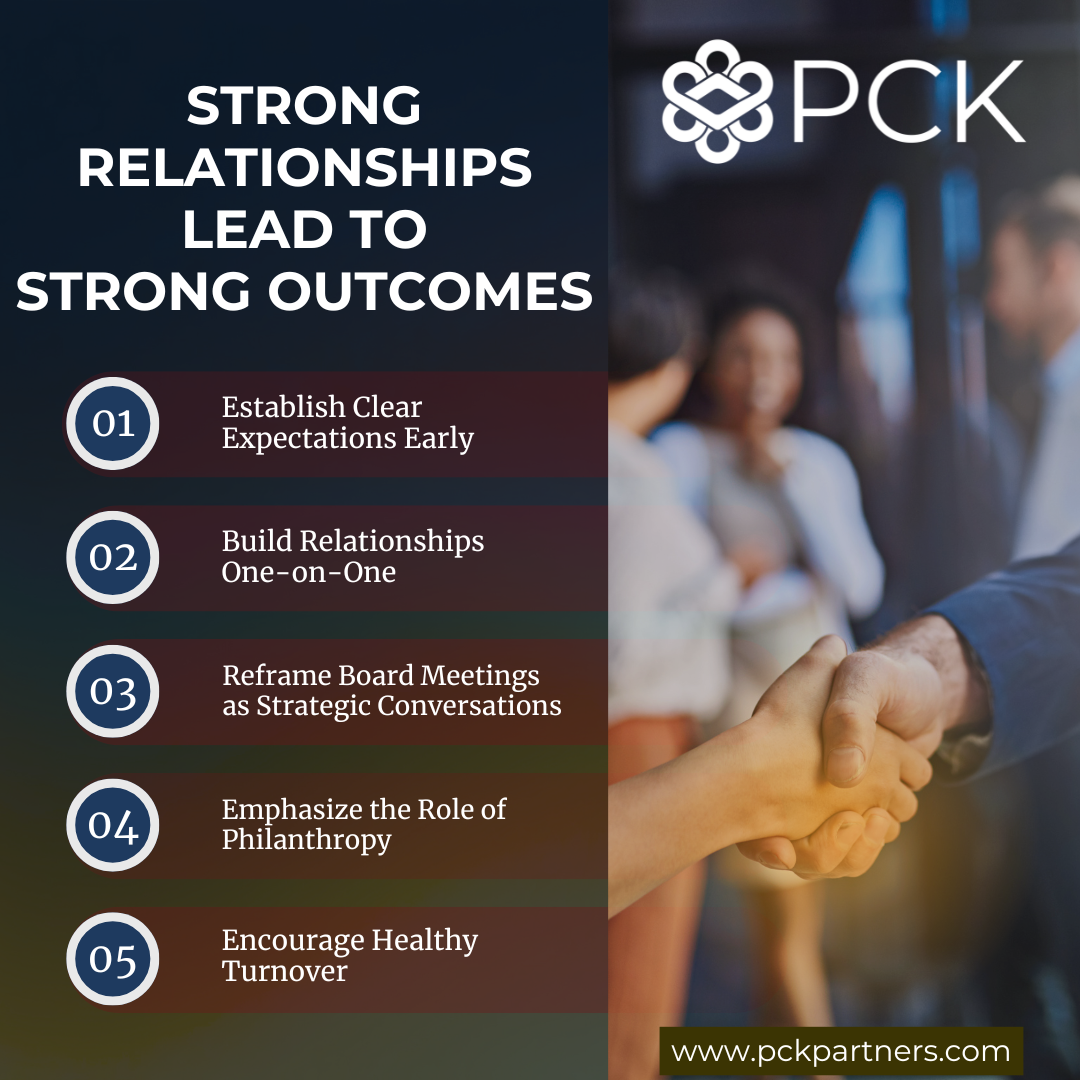Revitalizing the CEO–Board Relationship: How Nonprofit Leaders Can Spark Engagement and Accountability
Fresh leadership is an opportunity to breathe new life into a nonprofit’s board. Here’s how CEOs can strengthen board relations, boost participation, and set the stage for greater impact.
The Challenge Many Nonprofit CEOs Face
Stepping into a nonprofit CEO role—whether you’re new to the sector or taking over a long-standing organization—often comes with a stark realization: the board is stale. Attendance is inconsistent, participation is minimal, and board giving has plateaued. Many board members may be comfortable with “the way things have always been done,” but a stagnant board can quickly limit your nonprofit’s growth, fundraising, and mission impact.
As the CEO/Executive Director, building stronger board relationships is not just important—it’s essential to your success.
Keys to Improving CEO–Board Relations
1. Establish Clear Expectations Early
Too often, board members don’t fully understand what’s expected of them beyond attending quarterly meetings. Revisit your board member job description. Set expectations around attendance, committee participation, and fundraising. When expectations are transparent, it becomes easier to hold members accountable.
2. Build Relationships One-on-One
Don’t wait for the boardroom to engage with your trustees. Schedule one-on-one conversations to understand their motivations, strengths, and barriers. These relationships build trust and can uncover hidden talents or passions that help the organization grow.
3. Reframe Board Meetings as Strategic Conversations
If meetings are dominated by routine reports, attendance and engagement will always suffer. Shift the focus from operations to strategy. Use your agenda to pose big-picture questions about growth, community impact, and donor engagement. People show up when they feel their input matters.
4. Emphasize the Role of Philanthropy
A nonprofit board’s job isn’t just governance—it’s also advancing the mission through giving and fundraising. Reinforce the importance of 100% board giving (at a level that’s meaningful for each member) and create pathways for members to engage their networks in fundraising.
5. Encourage Healthy Turnover
Sometimes, the best way to reinvigorate a board is by bringing in fresh voices. Work with your governance or nominations committee to assess who is actively contributing and who may need to roll off. Turnover isn’t a failure—it’s an opportunity to align the board with your nonprofit’s next chapter.
When Change is Needed
For new CEOs especially, suggesting board changes can feel risky. But remember: your role is to lead the organization into the future. If the current board structure is limiting that progress, it’s your responsibility to advocate for evolution. Many boards respect and welcome a leader who can clearly articulate why changes are needed and how they’ll advance the mission.
Partnering for Progress
The CEO–board relationship is at the heart of nonprofit success. By setting clear expectations, building relationships, and fostering accountability, you can turn a stagnant board into an engaged, mission-driven team of ambassadors.
At PCK Partners, we’ve guided nonprofits through this exact challenge—helping CEOs refresh their board structure, strengthen governance, and unlock new energy in fundraising and participation. With the right strategies, your board can be your biggest asset, not your biggest hurdle.
Ready to strengthen your partnership with your board?
Let’s explore how your board can evolve into a high-performing, engaged, and mission-driven team. Schedule a consultation with PCK Partners today and discover the strategies that will elevate your nonprofit’s leadership and impact. Email either of our managing partners at Scott.Costello@pckpartners.com or Hector.Sanchez@pckpartners.com.

